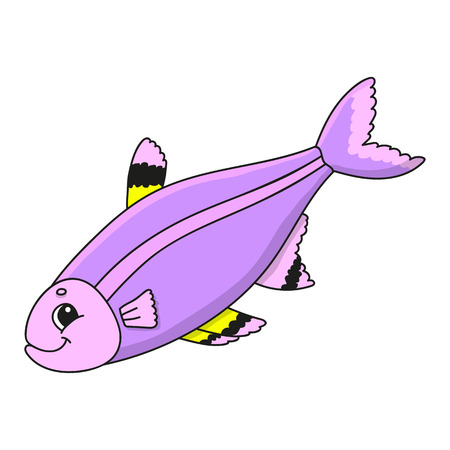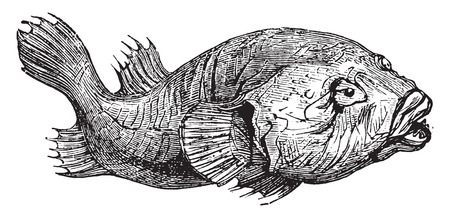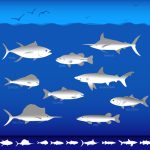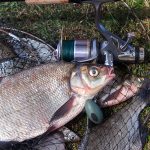1. Seasonal Movements and Behavior
Understanding how walleye move and behave throughout the year is key to finding them consistently. These fish dont stay in one place—they follow seasonal patterns that are influenced by water temperature, spawning needs, and food availability. By learning their movements, you can predict where theyll be and what techniques will work best.
Spring: Spawning Season
As water temperatures rise into the mid-40s°F (around 7°C), usually in early spring, walleye begin their spawning run. They migrate from deeper lake areas or river channels to shallow, rocky shorelines or gravel beds. This is one of the best times to target them because they’re more concentrated and aggressive.
Key Spring Locations:
- Shallow rocky points
- Mouths of rivers or creeks
- Gravel shoals
Tip: Use jigs tipped with minnows or soft plastics for best results during this time.
Summer: Deeper Water Patterns
Once spawning ends and water temperatures climb above 60°F (15°C), walleye shift to deeper, cooler waters. They often relate to structure like drop-offs, underwater humps, or weed edges. During low-light periods—early morning, late evening, or overcast days—they may move shallower to feed.
| Time of Day | Likely Location | Bait/Technique |
|---|---|---|
| Dawn/Dusk | Shallow flats near deep water | Crankbaits, spinner rigs |
| Noon (Bright Sun) | Main lake drop-offs, deep humps | Lindy rigs, bottom bouncers with nightcrawlers |
Fall: Transition Time
As temperatures drop in the fall, walleye feed heavily to prepare for winter. They move back toward shallower areas but still stay close to deeper structure. This season offers great opportunities for big catches as they become more aggressive.
Effective Fall Tactics:
- Trolling crankbaits along breaklines
- Casting jigs near rocky points
- Spooning in vertical presentations on steep drops
Reminder: Pay attention to baitfish activity—walleye often follow schools of shad or perch during fall feeding frenzies.
2. Understanding Lake and River Structure
To consistently catch walleye, you need to understand how they relate to different underwater structures in both lakes and rivers. Walleye are structure-oriented fish, meaning they use specific features like drop-offs, weed lines, rock piles, and current seams for feeding, protection, and movement. Knowing how these features work can make or break your fishing trip.
Key Structures in Lakes
In lakes, walleye tend to stick close to areas where theres a change in depth or cover. Heres how some of the most productive lake structures influence their behavior:
| Structure | Description | Why Walleye Like It |
|---|---|---|
| Drop-offs | Sudden changes from shallow to deep water | Offer quick access between feeding areas and safety zones |
| Weed Lines | Borders of aquatic vegetation | Provide cover for ambushing prey like minnows and perch |
| Rock Piles | Agglomerations of rocks or rubble on the lake bottom | Hold baitfish and provide structure for resting or hiding |
Key Structures in Rivers
Rivers are more dynamic than lakes due to the constant flow of water. Walleye position themselves in places where they can conserve energy while still having access to food. Here are common river features that attract walleye:
| Structure | Description | Why Walleye Like It |
|---|---|---|
| Current Seams | The area where fast-moving and slower-moving currents meet | Baitfish often gather here; walleye can ambush them with minimal effort |
| Eddies and Pools | Circular currents or deeper slow-moving sections behind obstructions | Create calm zones where walleye rest while waiting for food to drift by |
| Boulders and Wing Dams | Larger obstructions that break current flow | Create pockets of slack water and hold baitfish—perfect ambush spots for walleye |
Tactics Based on Structure Type
Your fishing approach should change based on the structure youre targeting. For example:
- Drop-offs: Use jigging techniques along the ledge to target cruising fish.
- Weed Lines: Try slip bobbers or spinner rigs just outside the vegetation edge.
- Rock Piles: Cast crankbaits or jigs over the top during low light hours.
- Current Seams: Drift live bait rigs just inside the seam for natural presentation.
- Eddies: Anchor nearby and vertically jig or cast upstream and retrieve through the eddy.
- Boulders/Wing Dams: Target slack water zones with jigs or bottom bouncers.
The Takeaway: Match Your Method to the Structure
The more you understand how walleye relate to their environment, the better you can plan your strategy. Whether youre fishing a deep northern lake or a flowing Midwestern river, learning these key structural elements will help you put more fish in the boat.

3. Water Temperature and Depth Preferences
Understanding how water temperature and depth affect walleye behavior is crucial for consistently finding and catching them. These fish are very sensitive to changes in their environment, and knowing their preferences can help you make smarter decisions on the water.
Ideal Water Temperatures for Walleye Activity
Walleye are most active within a specific range of water temperatures. During these times, they feed more aggressively and are easier to target with various techniques. Here’s a quick guide to what temperatures typically trigger certain behaviors:
| Water Temperature (°F) | Walleye Behavior |
|---|---|
| 32–39°F | Very sluggish, minimal feeding; deeper winter holes |
| 40–49°F | Spring transition; increased activity during warming trends |
| 50–65°F | Prime feeding window; spawning and post-spawn activity |
| 66–75°F | Active but may start moving deeper during mid-day heat |
| 76°F and above | Less active during daylight; more nocturnal or deep-water movement |
The Role of Depth in Walleye Movement
The depth at which walleye hold can change throughout the day and across seasons. In general, they follow baitfish movements and respond to light penetration and water temperature shifts. Heres how depth plays a role:
- Spring: Walleye move into shallower waters (5–15 feet) as they spawn and recover. Look for rocky shorelines, gravel bars, or river mouths.
- Summer: As surface temps rise, walleye often move deeper (15–30+ feet), especially during daylight hours. Focus on drop-offs, submerged humps, and mid-lake structures.
- Fall: They return to mid-depth ranges (10–20 feet) chasing baitfish closer to shorelines again. Evening bites get stronger as days shorten.
- Winter: Ice fishing season pushes them into deeper basins (20–40 feet), but early ice can still produce shallow bites near structure.
Bite Windows Based on Light and Temperature
Apart from depth and temperature alone, walleye tend to feed more actively during low-light periods — early morning, dusk, or even overnight. Combine this knowledge with temp/depth data for better timing your outings.
4. Baitfish and Forage Influence
Understanding what walleye eat—and where their food lives—is a major key to finding them. Walleye are opportunistic feeders, and their movements are often tied closely to the availability of baitfish like shad, perch, and various species of minnows. When you locate their food, youre more likely to find the fish youre targeting.
How Forage Affects Walleye Location
Different bodies of water offer different types of forage, and walleye adapt to whatever prey is most abundant. Heres a quick look at some common baitfish across various regions in the U.S. and how they influence walleye behavior:
| Forage Species | Typical Habitat | Walleye Behavior |
|---|---|---|
| Shad | Open water, especially in reservoirs and large lakes | Walleye suspend in mid-water columns or near drop-offs to ambush schools |
| Perch | Weed beds, rocky bottoms, shallow flats | Walleye stay close to structure and weed edges where perch congregate |
| Minnows (fathead, emerald shiners) | Nearshore zones, river mouths, current breaks | Walleye follow these smaller fish into shallower areas during low light hours or spring/fall transitions |
Seasonal Movements Tied to Forage
Baitfish don’t stay in one place year-round—and neither do walleye. In summer months, as water temperatures rise, baitfish like shad move deeper or suspend over open water. Walleye follow suit. In fall, when perch and minnows begin moving toward shallower flats to feed or spawn, walleyes will push shallow too.
Spring & Fall Patterns:
- Minnow-rich shallows attract walleyes during low-light periods.
- Look for walleye staging near creek mouths or wind-blown shorelines.
Summer Patterns:
- If shad are present, target suspended fish using sonar over deep basins.
- Trolling crankbaits through bait balls can trigger aggressive strikes.
Quick Tip:
If you see seagulls diving or bait jumping on your fishfinder screen, youre likely near a feeding zone. Drop a jig or troll through the area—it’s often game on!
5. Using Electronics to Locate Walleye
Modern fishing electronics have changed the game for walleye anglers. Tools like sonar, GPS, and fish finders can help you pinpoint underwater structures and identify where walleyes are holding. By understanding how to use these tools effectively, you can spend less time searching and more time catching.
Sonar: Your Underwater Eyes
Sonar is essential for reading whats beneath your boat. It helps reveal depth changes, bottom composition, submerged vegetation, and fish activity. When targeting walleye, look for drop-offs, humps, and transitions between soft and hard bottom—these are prime spots where walleyes like to hang out.
What to Look for on Sonar
| Feature | Description | Why It Matters for Walleye |
|---|---|---|
| Drop-offs | Sudden changes in depth | Walleyes often stage along edges to ambush prey |
| Humps | Underwater high points | Create structure that attracts baitfish and predators |
| Bottom Hardness | Difference in sonar return strength | Hard bottoms often hold more walleyes than soft ones |
| Bait Balls | Tight clusters of baitfish | Indicates a possible feeding zone for walleyes |
Using GPS to Mark Productive Spots
A GPS unit lets you mark waypoints where youve caught fish or found promising structure. Over time, this creates a personal map of productive areas you can return to season after season. Some GPS systems also allow you to overlay lake maps with contour lines so you can plan your approach more efficiently.
Fish Finders with CHIRP and Side Imaging
Todays advanced fish finders offer features like CHIRP (Compressed High-Intensity Radiated Pulse) and side imaging. CHIRP provides clearer images by using a range of frequencies, making it easier to distinguish fish from debris. Side imaging gives a wide-angle view of the water around your boat, perfect for scanning large areas quickly without spooking the fish.
Tips for Using Electronics Effectively:
- Start by scanning known walleye hotspots like points, ledges, and mid-lake humps.
- Use sonar sensitivity settings to better define fish arches and structure details.
- Adjust chart speed and range depending on how fast youre moving or drifting.
- Always mark potential spots on your GPS so you can revisit them later.
The key to success with electronics is not just having them but knowing how to interpret what they’re telling you. Practice reading your screen and matching what you see with actual bites—it’s the best way to build confidence in your gear and improve your catch rate.


